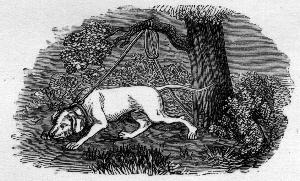
By Will Watson
One of the more surprising facts, which emerged from Derek Yaldon’s excellent book ‘The History of British Mammals’, were that the Wolf Canis lupus was still quite common within the Worcestershire countryside and large parts of lowland Britain in the 13th Century. That is until concerted efforts were made to eradicate them. Indeed the reason we know anything about their distribution at all is due to these campaigns funded and patronised by the royalty.
In the reign of Henry III (1216-1272), wolves were sufficiently numerous that he gave grants of land to various individuals upon the express condition that they take measures to destroy Wolves wherever they could be found. They were also common enough to be hunted for sport, as foxes are today, except of course this right was reserved for the King and his entourage.
However, as sheep farming, particularly in lowland England became more lucrative in the 13th Century, due to profits made from the sale of wool, more intensive farming methods were employed. Inevitably conflicts between sheep and Wolves became more commonplace (This pattern has been repeated throughout Europe. Currently Wolves are under threat in Transylvania because of changing farming practices. (BBC The Natural World 25th March 2001 Living with Carnivores).
There is little doubt that it was for economic reasons that Edward I (1272-1307) commissioned Peter Corbet in 1281 to destroy all the Wolves he could find in the counties of Worcestershire, Herefordshire, Gloucestershire, Shropshire and Staffordshire. This was a serious matter and bailiffs within the region were directed to be ready to assist him. He was obviously quite successful because he ended being paid handsomely and knighted for his services! It wasn’t only Wolves which were hunted, Foxes Vulpes vulpes and Wild Cats Felis silvestris were also treated as ‘vermin’. It is very likely that Wolves disappeared from Worcestershire around this period because all later reliable references of Wolves being hunted come from counties to the north. Just for the record Wolves were still being hunted in Lancashire in the early 14th Century and were considered to be still common within the Caledonia pine forests of Scotland in the reign of Mary (1547-1587). Wolves were finally driven to extinction in Scotland around 1700 (Yaldon).

Circumstantial evidence for Wolves also comes from Wolf place-names. Unfortunately Wolverley and Wolverton in Worcestershire are, according to the English Place-names dictionary, not associated with Wolves but with personal names. However, Wolvey in Warwickshire is thought to originate from the Old English wulf-hege ‘an enclosure to stock from sheep’. Coincidentally, eleven years ago I was responsible for the supervising the restoration of two ponds at Little Tolladine Farm, now contained within the Warndon Villages. The ponds followed the line of a curving boundary. When the archaeologists carried out an excavation of the site they found a broad ditch system on the line of the current hedge encircling the entire farm. However, they found no evidence of earlier buildings on this site. They concluded that this was a rare example of a medieval pound to enclose stock. The answers remains for what and what were the stock being protected from – were there Wolves in the Warndon Countryside?
| EKWALL, E. 1960. The Concise Oxford Dictionary of English Place-names. (Fourth Edition). Clarendon Press, Oxford. | |
| HARTING, J.E. 1880. British Animals extinct within Historic Times. Chapter on the Wolf pages 115-205 Trubner, London. | |
| RACKHAM, O. 1986. The History of the British Countryside. Dent. London. | |
| TAYLOR, C. 1975. Fields in the English Landscape. Archaeology in the Field Series. Dent. London. | |
| YALDON, D.W. 1999. The History of British Mammals. T & A. D. Poyser Ltd. London. |

The wolf as illustrated in J E Harting’s book of 1880! The other illustrations are from the same source.
| WBRC Home | Worcs Record Listing by Issue | Worcs Record Listing by Subject |